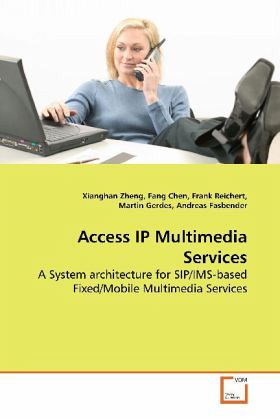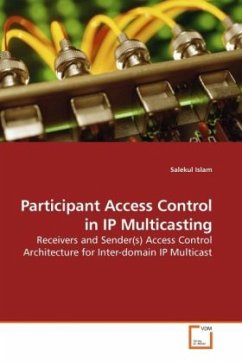
Access IP Multimedia Services
A System architecture for SIP/IMS-based Fixed/Mobile Multimedia Services
Versandkostenfrei!
Versandfertig in 6-10 Tagen
39,99 €
inkl. MwSt.

PAYBACK Punkte
20 °P sammeln!
The IMS (IP Multimedia Subsystem) is the future trend that will merge the Internet with the cellular world. However, a majority of legacy devices today and future lack coherent support for next generation networked multimedia services. The goal of this book is to find a way to access IMS services for non-IMS devices, especially for the mobile phone devices. In this book, we proposed a browser-based IMS System Architecture for the non-IMS devices to access IMS services. The system architecture mainly focuses on portable non-IMS devices, but it is also compatible with fixed devices. Besides, we ...
The IMS (IP Multimedia Subsystem) is the future
trend that will merge the Internet with the cellular
world. However, a majority of legacy devices today
and future lack coherent support for next generation
networked multimedia services. The goal of this book
is to find a way to access IMS services for non-IMS
devices, especially for the mobile phone devices. In
this book, we proposed a browser-based IMS System
Architecture for the non-IMS devices to access IMS
services. The system architecture mainly focuses on
portable non-IMS devices, but it is also compatible
with fixed devices. Besides, we also proposed
several technical solutions to the problems in
security, provisioning, identity management, inter-
working, and device management. To evaluate the
architecture we implemented three IMS use cases: IMS
Registration, Presence service, and Page mode
Instant Message. Based on the testing result, we
validate the possibility of the system architecture.
The work also outlines a roadmap for future
potential works and system extensions.
trend that will merge the Internet with the cellular
world. However, a majority of legacy devices today
and future lack coherent support for next generation
networked multimedia services. The goal of this book
is to find a way to access IMS services for non-IMS
devices, especially for the mobile phone devices. In
this book, we proposed a browser-based IMS System
Architecture for the non-IMS devices to access IMS
services. The system architecture mainly focuses on
portable non-IMS devices, but it is also compatible
with fixed devices. Besides, we also proposed
several technical solutions to the problems in
security, provisioning, identity management, inter-
working, and device management. To evaluate the
architecture we implemented three IMS use cases: IMS
Registration, Presence service, and Page mode
Instant Message. Based on the testing result, we
validate the possibility of the system architecture.
The work also outlines a roadmap for future
potential works and system extensions.












